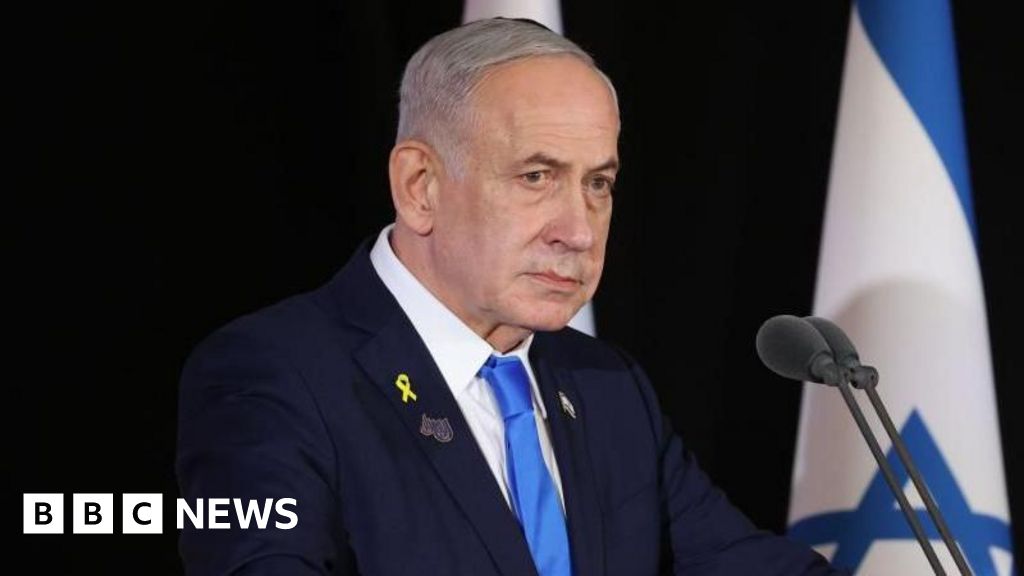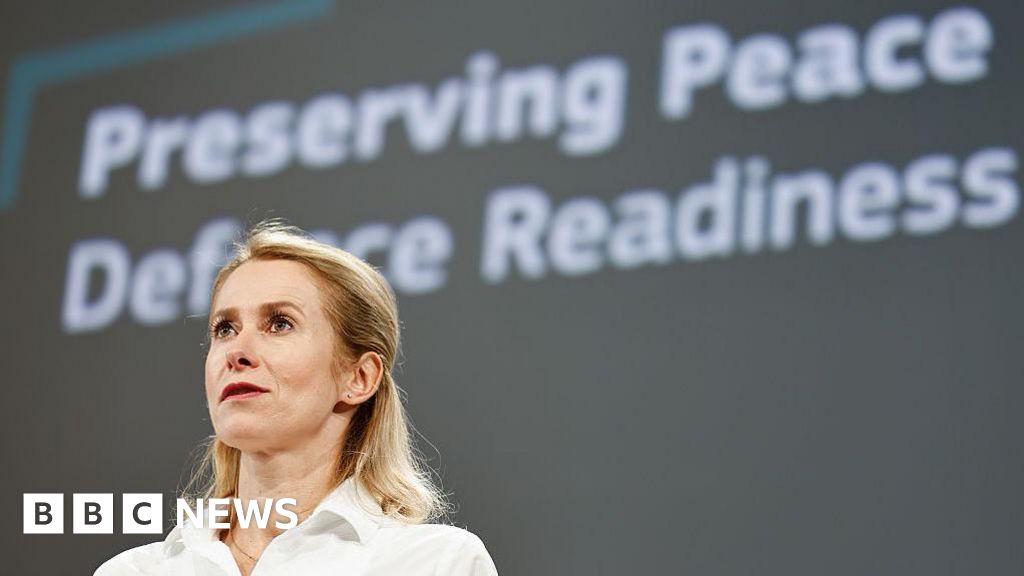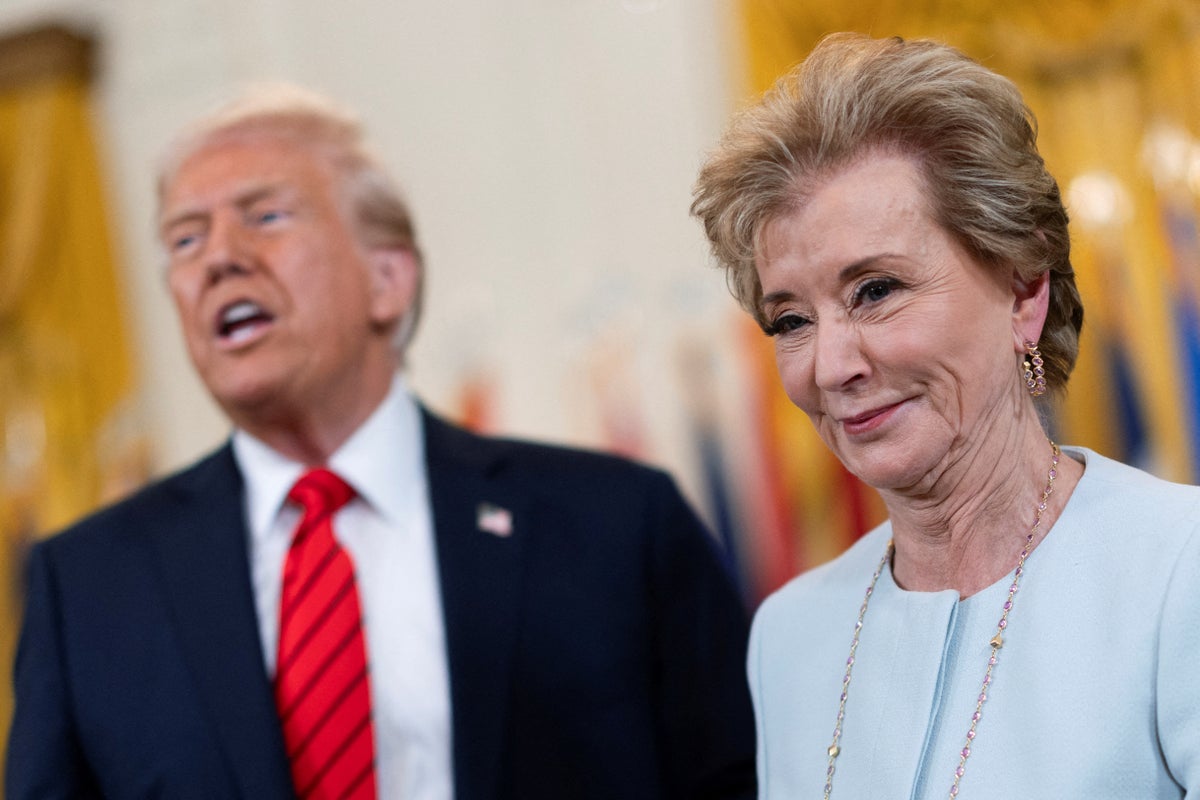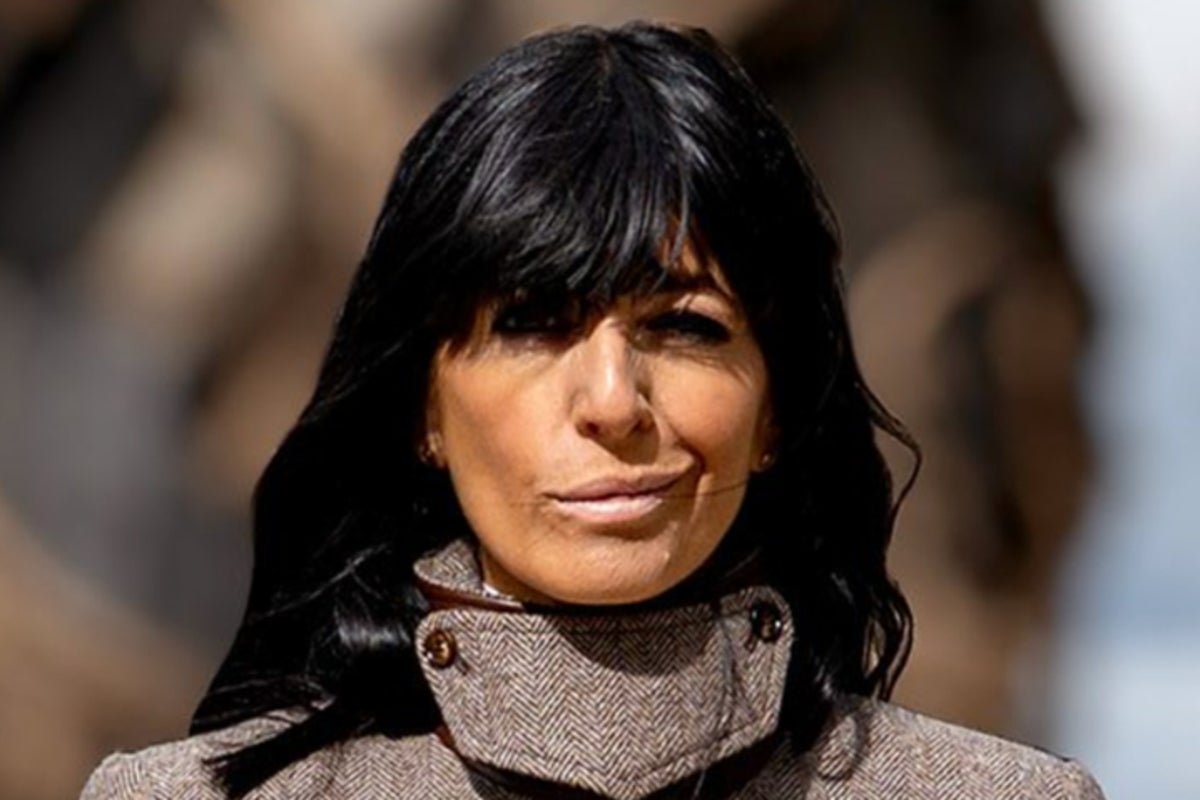Russia is increasing air attacks to compensate for failing to crack Ukrainian defences on the ground, according to Kyiv.
“Russia has started a new wave of air terror against Ukraine – against our cities and civilian infrastructure,” Ukrainian President Volodymyr Zelenskyy told NATO’s 71st Parliamentary Assembly on October 13.
Recommended Stories
list of 4 items- list 1 of 4‘Fistfights at gas stations’: Ukraine targets Russian energy infrastructure
- list 2 of 4Trump says Modi has assured him India will not buy Russian oil
- list 3 of 4Ukraine war ‘will end on Trump’s watch’, US tells NATO
- list 4 of 4Germany pledges $2bn in military aid for Ukraine as Kyiv seeks more funds
Zelenskyy spoke days after Russia launched an overnight strike against Ukraine’s energy infrastructure involving 465 drones and 19 missiles.
 A boy with a bicycle looks on near buildings damaged during a Russian drone and missile strike in the town of Brovary, outside of Kyiv, October 10, 2025 [Alina Smutko/Reuters]
A boy with a bicycle looks on near buildings damaged during a Russian drone and missile strike in the town of Brovary, outside of Kyiv, October 10, 2025 [Alina Smutko/Reuters]Ukraine said it downed 405 of the drones and 15 of the missiles, but the remainder deprived three-quarters of a million Ukrainians of electricity for the day, wounded 20 people and killed a seven-year-old boy.
Zelenskyy said cold autumn weather had reduced the effectiveness of Ukraine’s air defences by 20-30 percent, claiming Russia “deliberately waited” for this.
On Wednesday, Russian drones again knocked out power in some parts of Ukraine and struck a thermal power plant, according to Naftogaz, Ukraine’s gas utility.
Russia ‘increased the number of air attack means’
On the battlefront, too, Russia was turning to the air.
“In a month, the enemy has increased the number of air attack means used by 1.3 times,” wrote Ukrainian commander-in-chief Oleksandr Syrskii on his Telegram channel on Saturday.
Syrskii generally refers to Russian first-person view (FPV) drones and air-launched glide bombs, which Russia uses at the front in addition to artillery and multiple launch rocket systems.
But Russia was increasingly using its long-range Shahed drones – the type it deploys against cities – to hit targets at the front as well, said the Kyiv Independent after speaking with analysts.
Shaheds are more precise than glide bombs, and Russia was “likely looking to conserve KAB guided aerial bombs where possible to prepare for a long war ahead”, said the newspaper.
Discussions with Ukraine’s allies
Russia’s tactics prompted a flurry of consultations with allies.
On the day of the massive air strike, Zelenskyy said he spoke with United States President Donald Trump about the damage to Ukraine’s energy sector and what the nation needs to protect it. During the week, he also spoke with the leaders of Canada, Germany, the United Kingdom and France, and the European Union’s foreign policy chief, Kaja Kallas.
Zelenskyy said he is short of air defences and has asked allies to increase provisions to protect 203 key facilities in Ukraine.
At Wednesday’s meeting of the Defence Contact Group for Ukraine, Germany pledged 2.3 billion euros ($2.7bn) in new weapons and air defence systems, including interceptors for Patriot launchers and two more IRIS-T systems.
Poland offered electricity exports, generators and the services of a liquefied natural gas (LNG) terminal to bolster Ukraine’s energy supply.
Zelenskyy dispatched Prime Minister Yulia Svyrydenko to the US to lay the groundwork for his meeting with Trump on Friday.
Russia’s fight for Donetsk
On the ground, Zelenskyy said this week that Russia had planned to capture the entirety of the Donetsk region this autumn. About a quarter of it remains in Ukraine’s hands.
The hammer has fallen hardest on Pokrovsk, once a city of 60,000 people. Russia has failed to take it by direct assault and by conducting an enveloping manoeuvre through Dobropillia to its north.
Syrskii said a Ukrainian counteroffensive at Dobropillia had retaken 181sq km (70sq miles) of territory since the end of August.
The Dobropillia counteroffensive caused 12,000 Russian casualties, including 7,000 deaths, and upset Russia’s plans to conquer Donetsk this autumn, Zelenskyy claimed.
Al Jazeera was unable to independently verify the death toll estimated by Ukraine.
Ukraine’s operation “disrupted all the plans that the Russians communicated to the American side, claiming they would supposedly occupy the Donbas – most of it – specifically by November. Initially, they said September, then pushed the deadline to November”, said Zelenskyy.
Russia’s determination to capture Donetsk was evident in the fact that it had returned to high-casualty mechanised assaults on October 6, 9 and 13, said the Institute for the Study of War, a Washington-based think tank, having largely stopped reinforced company-sized mechanised assaults in late 2024.
All three assaults came in the Dobropillia direction and were defeated with high losses to men and armour.
“The Russians are now tasked with urgently taking Pokrovsk – at any cost,” Zelenskyy said, and some analysts suggested they may be swinging to the south of Pokrovsk instead.
Russia has not been wholly without success. During the week of October 9-15, it claimed to have seized four villages in Donetsk, and settlements in Kharkiv and Dnipropetrovsk.
In Kharkiv, Zelenskyy said, Ukrainian forces were pushing Russian troops out of some positions in the city of Kupiansk, in whose northwestern outskirts they have taken positions.
Despite this, Ukrainian authorities on Wednesday evacuated hundreds of families from 27 villages in the Kupiansk area, citing the security situation.
Ukraine’s strikes and Tomahawks
Ukraine continued a successful campaign to choke off Russian fuel production.
Its drones struck Lukoil’s Korobkovsky Gas Processing Plant in the Volgograd region of Russia on October 9.
“The plant is part of the fuel supply system for the domestic market of the Russian Federation, as well as for export,” said Andriy Kovalenko, head of Ukraine’s Center for Countering Disinformation.
On Monday, Ukraine struck the oil depot at the port of Feodosia in Crimea, confirmed the region’s occupation head, Sergey Aksyonov. It is used to supply Russian occupying troops in Crimea, Zaporizhia and Kharkiv with fuel by rail.
Russian opposition news outlet Astra said the strikes damaged 11 fuel tanks, including eight 5,000-10,000-tonne diesel tanks and two petrol tanks.
Geolocated footage confirmed the attack, as well as strikes on two electricity substations in Feodosia and Simferopol, also in Crimea.
“This is absolutely fair that Ukraine strikes back with precise, targeted attacks,” said Zelenskyy.
The Financial Times reported on Sunday that Ukraine has not been conducting these operations alone.
Several US and Ukrainian officials told the daily that Washington has been providing intelligence for the targeting of Russian refineries for months.
 (Al Jazeera)
(Al Jazeera)“The shift came after a phone call between Donald Trump and Volodymyr Zelenskyy in July, when the FT reported the US president asked whether Ukraine could strike Moscow if Washington provided long-range weapons,” wrote the paper.
The sources said the US was involved in target selection, timing and route planning to evade Russian air defences.
Ukraine has so far mostly used its domestically produced drones, and Zelenskyy last month asked Trump to provide US Tomahawk cruise missiles, with a range of up to 2,500km (1,550 miles)
The issue is to be among those discussed between Trump and Zelenskyy on Friday.
Russia’s deputy chairman of its National Security Council warned against the deployment of Tomahawks, which are nuclear-capable.
“The delivery of those missiles would not be good for anyone. First and foremost, it will end badly for Trump himself,” warned Dmitry Medvedev in a written post.

 6 hours ago
1
6 hours ago
1
.jpeg)

































 English (US) ·
English (US) ·